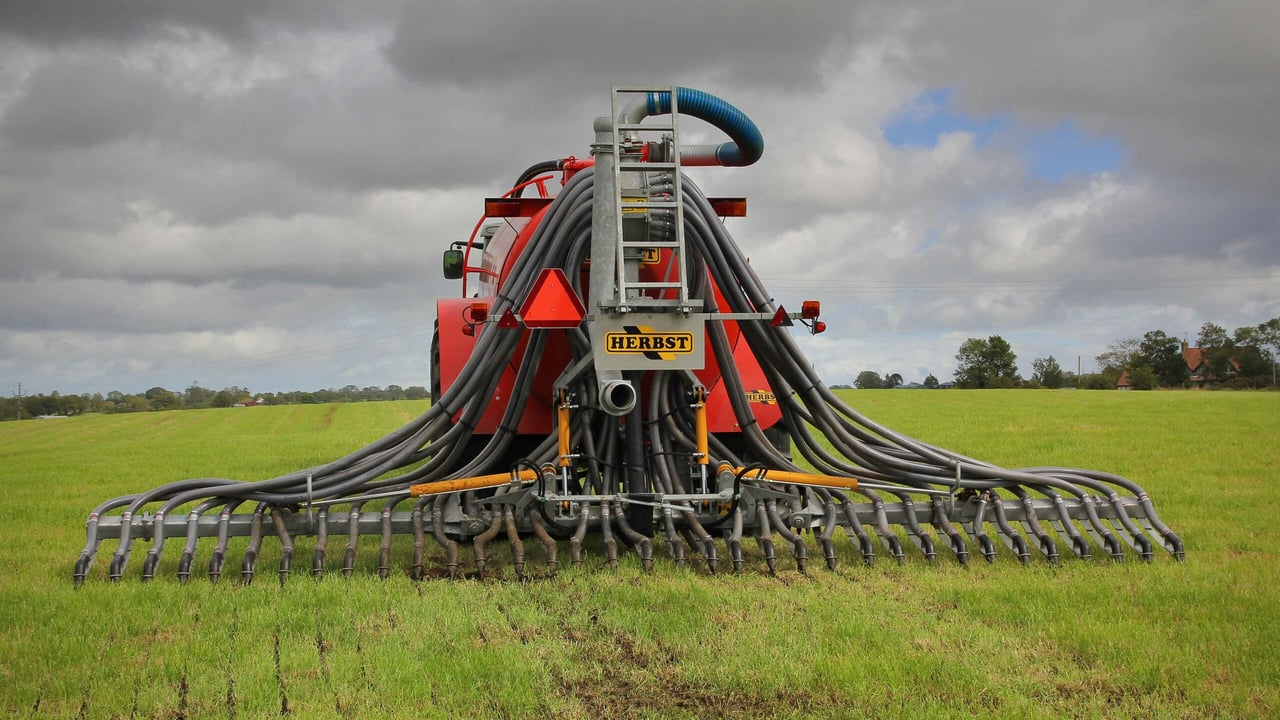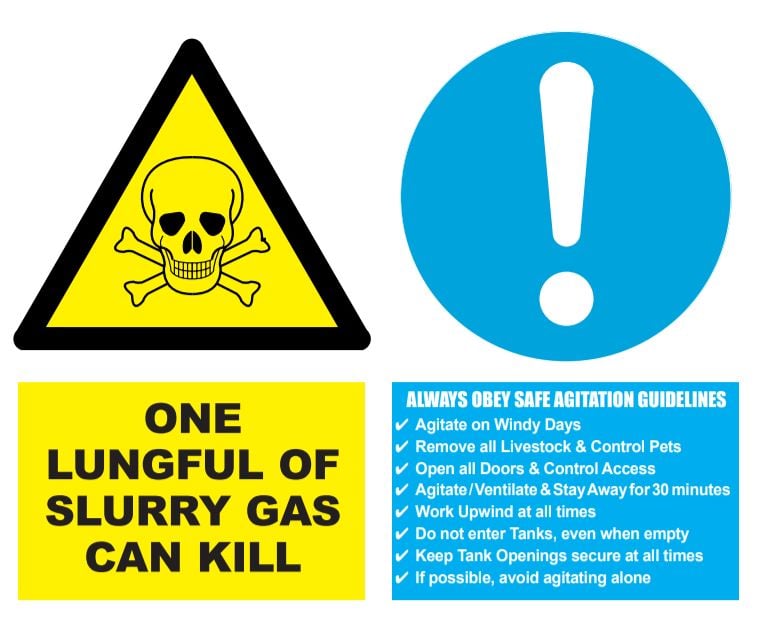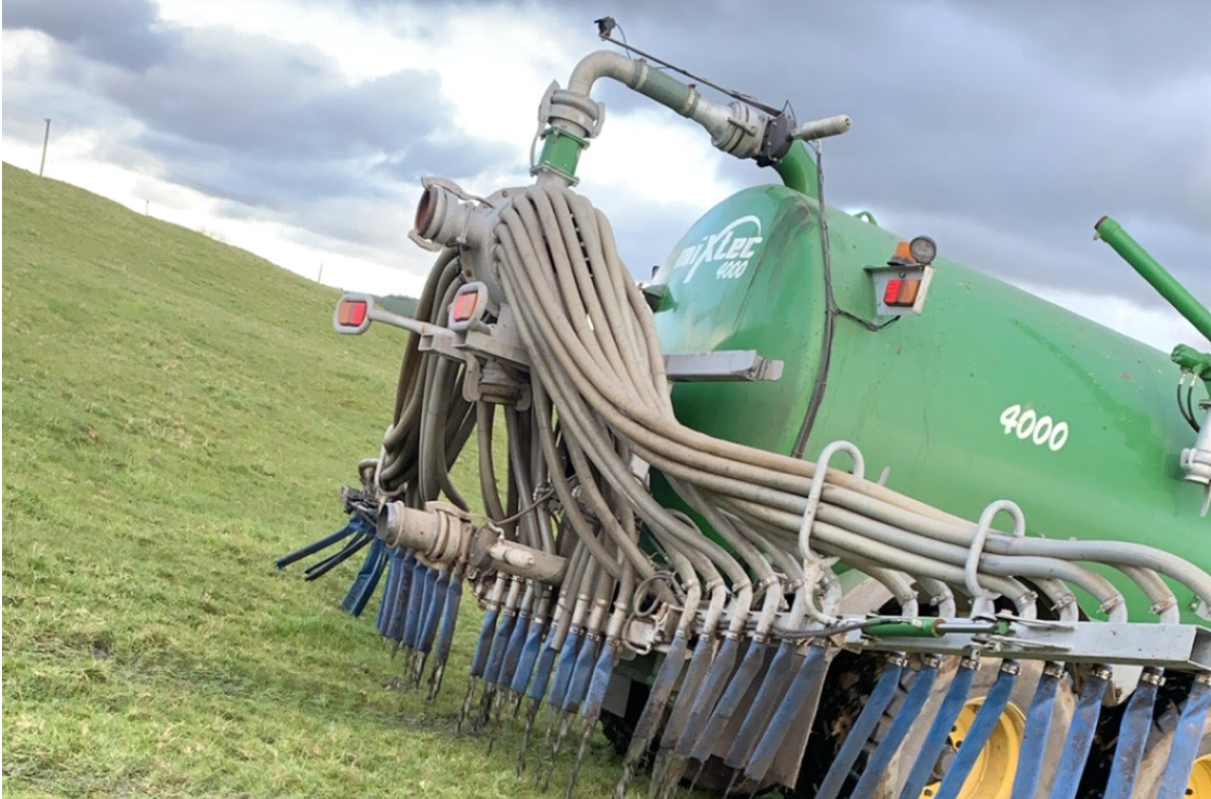Farm Safety Series


Farm safety: Top safety tips when working with slurry
The Department of Agriculture, Food and the Marine (DAFM) has partnered with Axa and Agriland Media Group for an innovative campaign to promote greater awareness of farm safety.
In the second instalment of this digital-only, farm-safety campaign, we turn our focus to safety around slurry storage, handling, and spreading.
In its review of work-related fatalities in the agriculture sector between 2011-2020, the Health and Safety Authority (HSA) revealed that, of the 13 fatalities attributed to drowning, slurry was responsible for eight.
Of the eight, there were three mechanisms of fatality: temporarily open slurry tank; open slurry pit; and gas poisoning.
Four of the fatalities occurred when farmers fell into temporarily open slurry tanks at agitation points; three were caused by drowning after farmers fell into open slurry pits; and one farmer was poisoned by fumes from the slurry before falling in, the HSA confirmed.
| Slurry-related fatalities 2011-2020 | Number | % |
| - Temporarily open slurry tank | 4 | 50 |
| - Open slurry pit | 3 | 37.5 |
| - Gas poisoning | 1 | 12.5 |
| Total | 8 | 100 |
To date, this year, there has been one fatal farm incident involving slurry.
These harrowing incidents highlight the many hazards associated with slurry, and the absolute need for care and attention when working with it.
Top tips on ways to stay safe during this busy period
Farmers must prepare well, and in advance, when spreading and agitating slurry.
And, importantly, children must never be allowed near a tank, pit, agitator, or any machinery involved in slurry handling.
Facilities and equipment
Farmers must ensure that all facilities and equipment are safe and up to standard.
Hydraulic motors to replace PTO shafts are grant aided under the Targeted Agricultural Modernisation Scheme and should be considered as a safer alternative to PTO shafts, according to the DAFM.
Agitation
Agitation of slurry can be extremely hazardous, as it causes harmful gases to be released.
There are several important considerations when carrying out this activity.
Targeted Agricultural Modernisation Scheme support is available to construct external agitation points.
Slurry gasSlurry gas comprises methane, carbon dioxide, ammonia and the poisonous gas, hydrogen sulphide.
These gases are produced by bacteria during the decomposition of slurry, and agitation causes these gases to be released. Slurry gas is heavier than air and will settle over the top of the slurry and at ground level during agitation.
Gases may also migrate along ducts or pipework into adjoining buildings such as milking parlours.
Hydrogen sulphide has a 'rotten egg' smell at low levels but cannot be detected at higher levels as it quickly affects your ability to smell. Inhaling a breath or lungful of the gas can cause unconsciousness or even death.
Child safety
Children’s safety must be front and centre of every conversation about farm work, especially as we approach the summer months when children will be home on their school holidays.
You need to ask yourself: Where will the children be? Can they access the farmyard? Who will be supervising them?
You cannot assume someone else will be minding them, if you haven’t discussed it!



